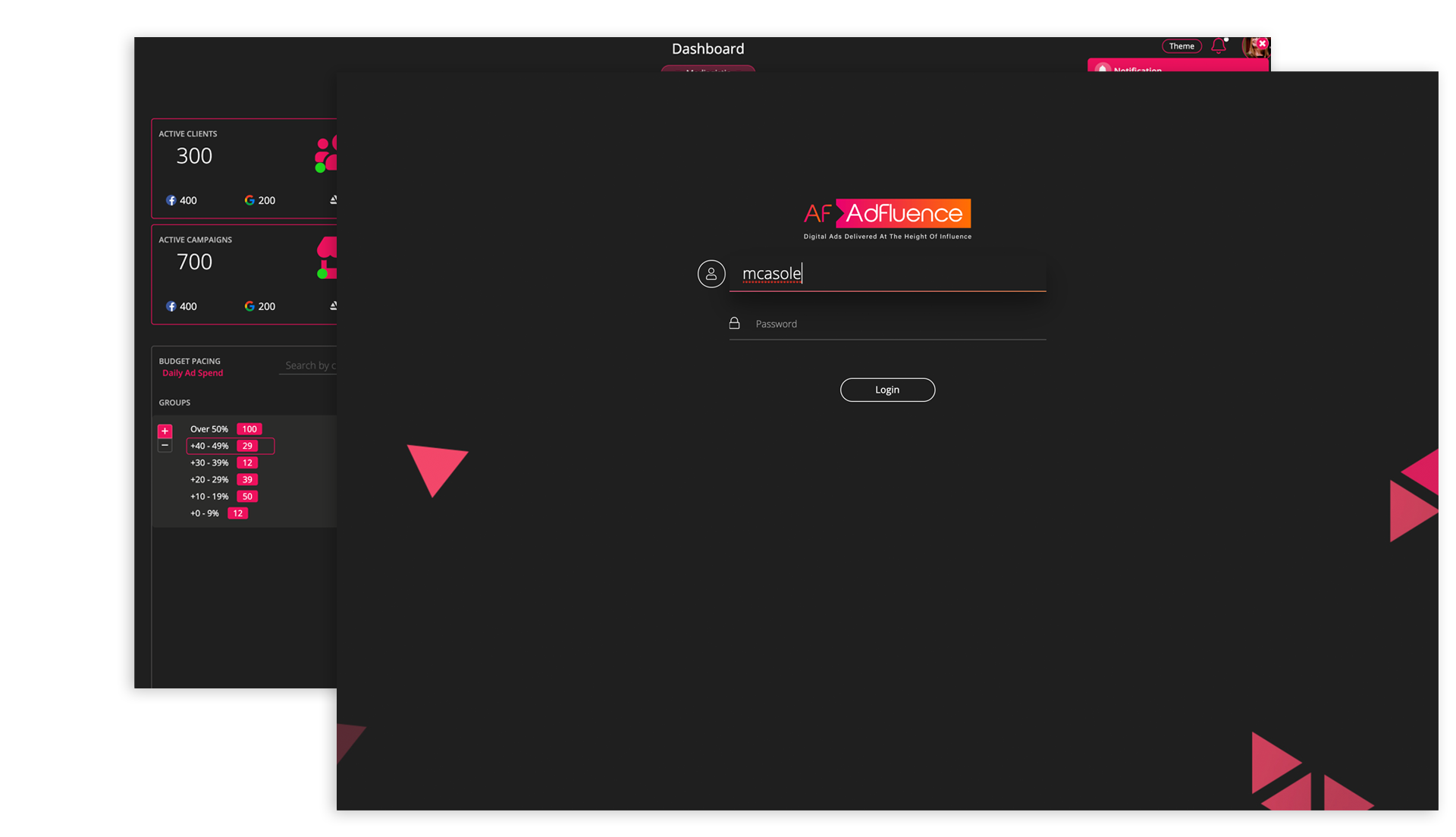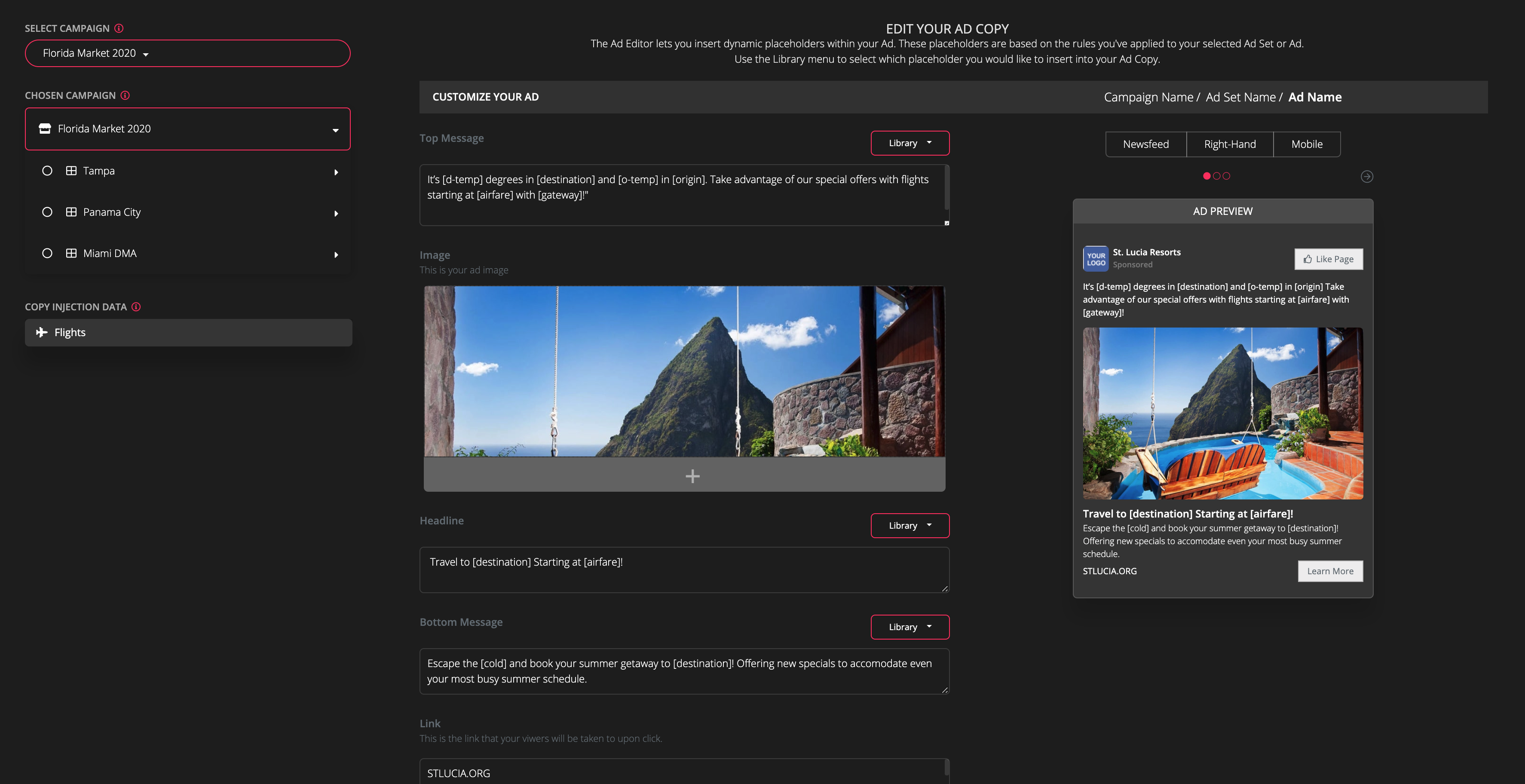AdFluence
How I transformed a complex AI platform into an interface so intuitive that media buyers went from skeptical to excited in just one demo
At a Glance
The Problem
Media buyers were drowning in data but starving for insights – until I showed them how AI could actually make their jobs easier
I walked into a room full of media buyers who were skeptical about yet another "AI-powered platform." They'd been burned before by tools that promised the world but delivered confusion. But when I showed them my prototype – built with HTML, CSS, and jQuery – their eyes lit up. "Finally," one buyer said, "something that actually makes sense."
The challenge wasn't just building interfaces; it was making AI feel human. I worked closely with a Python engineering team to translate complex machine learning algorithms into intuitive dashboards that media buyers could actually understand and trust. The result? A platform that didn't just work – it made their jobs easier.
Design That Speaks Human
Figma interfaces that made AI feel approachable, not intimidating
Prototypes That Work
HTML, CSS, jQuery prototypes that actually demonstrated the vision
Engineering Partnership
Collaborated with Python team to bring designs to production
Our Objectives
Transforming skepticism into trust through transparent AI design
Success Criteria
My Approach: Making AI Human
How I turned skepticism into excitement by focusing on what media buyers actually needed
Step 1: Understanding the Skepticism
I started by talking to media buyers who'd been burned by "AI platforms" before. They told me stories about tools that promised everything but delivered confusion. The common thread? "It's too complicated," "I don't trust the data," and "I'd rather do it myself." That's when I knew my job wasn't just to design interfaces – it was to rebuild trust.
- Interviewed media buyers about their daily frustrations
- Analyzed existing platforms to understand what wasn't working
- Identified the gap between AI capabilities and user needs
- Mapped out workflows to find automation opportunities
Step 2: Designing for Trust
I realized that media buyers needed to see the AI working, not just hear about it. So I designed interfaces that showed the "why" behind every recommendation. Instead of black-box algorithms, I created transparent dashboards that explained decisions in human terms. Then I built interactive prototypes in HTML, CSS, and jQuery that actually worked – no smoke and mirrors.
- Designed transparent AI interfaces in Figma
- Built working prototypes with HTML, CSS, and jQuery
- Created dashboards that explained AI decisions
- Collaborated with engineers on AI integration
Step 3: Prototypes That Actually Work
The moment of truth came when I demoed my prototype to a room full of skeptical media buyers. Instead of showing them static mockups, I had a fully functional interface built with HTML, CSS, and jQuery. They could click buttons, see real data flow, and actually experience how the AI would work. The skepticism turned to excitement in minutes.
- Built fully functional prototypes with real interactions
- Created interfaces that worked across different verticals
- Demonstrated AI capabilities through live data visualization
- Made complex algorithms feel simple and intuitive
Step 4: From Skepticism to Success
The testing phase was incredible. Media buyers who had been skeptical were now asking when they could get access to the real platform. I worked closely with the Python engineering team to translate my prototypes into production code, and the results spoke for themselves: 85% ROI increase and 60% time savings. But the real win? I'd proven that AI could be both powerful and approachable.
- Tested with real media buyers who became advocates
- Refined interfaces based on actual usage patterns
- Collaborated with Python team for seamless production launch
- Measured real impact on business outcomes
The Results: When Skepticism Turns to Success
Numbers tell the story, but the real win was changing minds about what AI could do
85% ROI Increase
When media buyers could actually see and trust the AI's recommendations, they started making better decisions. The result? Campaigns that performed 85% better than before – because now they had insights they could understand and act on.
60% Time Savings
Media buyers went from spending hours on repetitive tasks to focusing on strategy and creative optimization. The AI handled the grunt work, but the interface made it feel like they were still in control – because they were.
4 Vertical Markets
What started as a solution for one industry became a platform that worked across retail, tourism, medical, and more. The secret? Designing interfaces that were flexible enough to adapt to different needs while staying intuitive for everyone.
100% User Adoption
The ultimate validation: every single media buying team that tried the platform adopted it. No training sessions, no resistance – just immediate recognition that this was how AI-powered tools should work.
Learnings & Reflections
Key insights from transforming AI skepticism into enthusiasm
What Worked Well
Building functional prototypes instead of static mockups was the game-changer. When media buyers could actually interact with the AI and see real data flow, their skepticism melted away instantly.
What I'd Do Differently
I would have documented the transition from skepticism to adoption more thoroughly with video testimonials. Those "aha moment" reactions would have been powerful evidence of the design's impact.
Key Takeaway
Transparency is the key to AI adoption. When users can see and understand how AI makes decisions, they don't just accept it—they embrace it. This principle now guides all my AI/ML interface designs.
The Tech Stack: Where Design Meets AI
How I bridged the gap between complex algorithms and intuitive interfaces
My Toolkit: Making AI Approachable
Figma: Designing for Trust
I designed every interface element in Figma with one goal: making AI feel transparent and trustworthy. No black boxes, no mysterious algorithms – just clear, explainable interfaces that media buyers could understand and trust.
HTML/CSS/jQuery: Prototypes That Work
Instead of static mockups, I built fully functional prototypes that actually demonstrated the AI's capabilities. Media buyers could click, interact, and see real data flow – no imagination required.
Python Team Collaboration
Working with the Python engineering team was crucial. I translated complex AI algorithms into user-friendly interfaces, ensuring that powerful technology felt approachable and trustworthy.
Multi-Vertical Flexibility
I designed interfaces that could adapt to different industries without losing their intuitive nature. The same core principles worked across retail, tourism, medical, and more.
See the Transformation
From skeptical media buyers to excited advocates – watch the journey unfold

